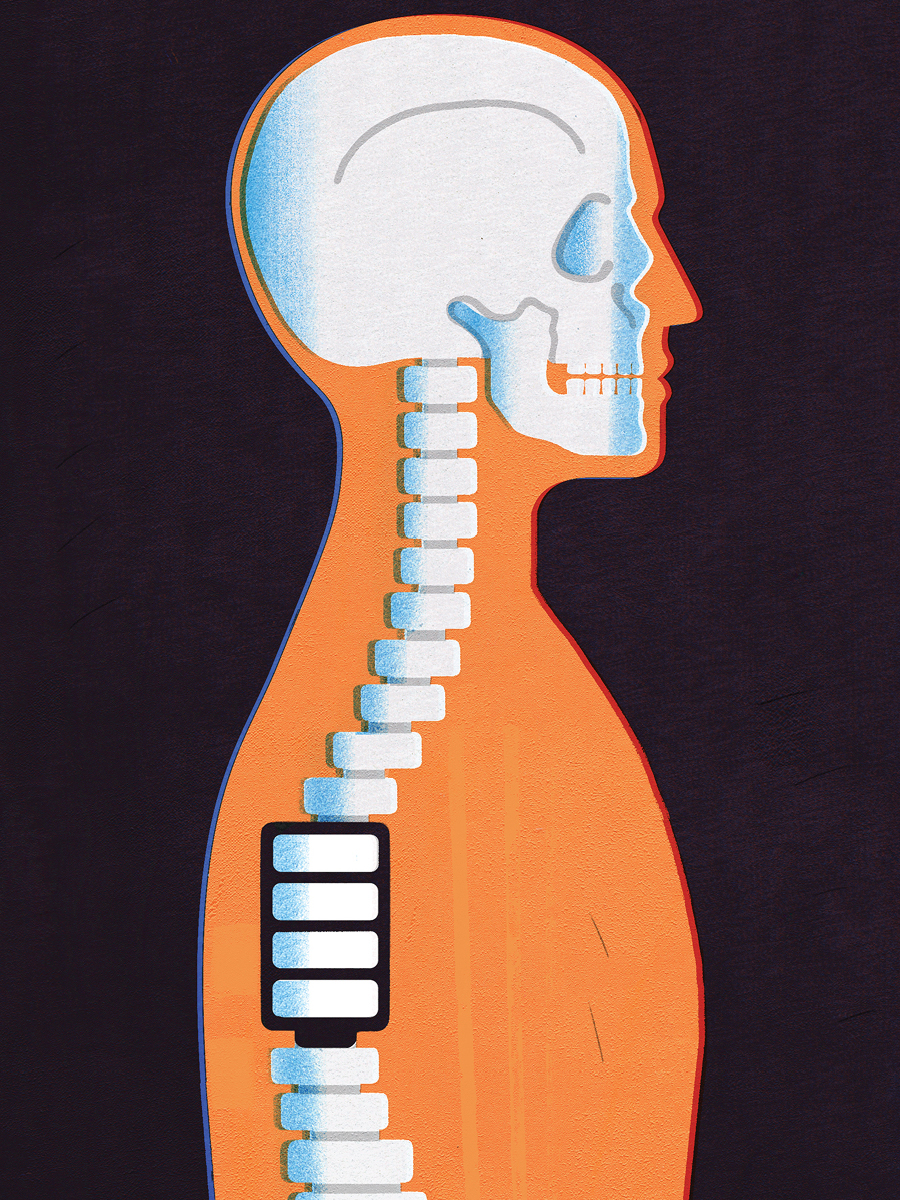To Walk Again
Researchers are developing a way to restore the ability to walk in people who’ve been told it would never happen

Over the course of the next three years, Dr. Vivian Mushahwar and her team will be readying their experimental spinal implants for an eventual human trial.
Their research could change the lives of patients who have long-term spinal-cord injuries.
“The goal is to return the function of standing and walking to people with severe injuries to their spinal cords, those who do not have residual connections,” says Mushahwar.
What does this mean? Mushahwar and her team from the SMART Network are working on a small electrical implant that would act as a bridge between the part of the spinal cord that controls the legs and the brain. When people experience paralyzing injuries, the electrical link between the brain and what’s known as the lumbar enlargement — a five centimetre region near the base of the spine — is cut. But, if both the brain and the lumbar enlargement are still active, Mushahwar — whose first degree came in the field of electrical engineering — believes they can be reconnected using a small implant that bridges the damaged area.
“The first goal is to make sure the restored walking is stable,” she says. “In the first generation, control signals to the implant can be transmitted from a system worn like a belt. In the future upgrades, signals from the brain can directly, intuitively and automatically control the implant in the same manner that persons who do not have a spinal cord injury can seamlessly stand and walk.”
But, before it can be tested in humans, Mushahwar and her team will spend the next three years testing the implant on pigs. Trials have already been successful in cats and monkeys — but pigs are vital, because, as Mushahwar says, their bone and spinal structure is closer to humans than any other mammal.
Her team is receiving funding from the U.S. Department of Defense to aid in this stage of trials.
“If this is successful, then we would go to Health Canada, and the (American) FDA to get approvals to prepare for the first trial in a human,” Mushahwar says.
How does it work? For many people, after they experience a spinal-cord injury, the part of the spinal cord below the injury remains alive. This means that the lumbar enlargement — that area that controls leg motion — remains in working order.
So, the electrical implant basically allows the enlargement to receive commands and functions as though it is receiving orders again from the brain.
A flat coil under the skin wirelessly receives signals from a “smart belt” and transmits them to the implant. Not only does the belt act as the control point that the recipient uses to send control signals to the implant, but it also houses batteries, so there’s no need for repeat surgeries. Mushahwar says that, at the human-trial stage, the implant recipients will likely need to use canes or possibly even crutches in order to keep their balance. In a lot of ways, they will need to re-learn how to walk.
The SMART Network, based at the University of Alberta, is a research lab headed by Mushahwar that brings together
great minds from a variety of different fields — neuroscientists, engineers and doctors — to collaborate on new systems to help people who experience neural injury or disease to recover their mobility. As medicine advances, there is a greater need to collaborate with experts from fields other than medicine. As the spinal cord is basically an electrical system, engineers can bring fresh perspectives to ideas that have befuddled doctors for years. Crossing disciplines and collaboration leads to better outcomes.
It attracts world-class talent; Mushahwar is a prime example; she studied electrical engineering at Brigham Young University, then bioengineering at the University of Utah. She continued her American studies at Emory University in Atlanta before coming to Edmonton to work on her post-doc in neuroscience. When an institution provides worldclass research opportunities, it can then attract world-class talent.
If, a few years down the road, some wheelchairs are relegated to the scrap heap, Mushahwar’s research will definitely have been worth it.
Donor urges community to keep researcher’s work in Edmonton
Local philanthropist Jim Hutton is concerned that if a big American university steps in to fund the rest of Dr. Mushahwar’s work, Edmonton will have lost the opportunity to become home to one of the greatest discoveries in modern day medicine.
“It would be a tragedy if one of those big universities swooped in to fund the final phase of her research,” says Hutton, a longtime donor to University Hospital Foundation. “They get the credit and we get nothing.”
After donating to the Mazankowski Alberta Heart Institute and the University Hospital Foundation’s Brain Centre Campaign, Hutton was introduced to the work being done in spinal-cord research at the University of Alberta’s SMART Network.
Mushahwar’s research meant a lot to Hutton, who had a family member suffer a severe spinal-cord injury in the 1970s.
Hutton said he was expecting to see “some sort of mechanical device” to help those with spinal-cord injuries regain some mobility, not the advanced implant.
“To my great surprise, it wasn’t thatat all,” he says. “The sophistication of it was unbelievable. She is just a whisker away from being able to make a person walk.”
Not only did he commit targeted funding, he’s acted as an evangelist for the program, telling others that the SMART Network is worthy of support. A retired engineer, Hutton was fascinated by the mixing of medicine and electricity. He invited Mushahwar to speak to the Society of Senior Engineers, a professional group to which he belongs.
“She is a treasure we can’t afford to lose.”
Share this article
Facebook
Twitter
LinkedIn
